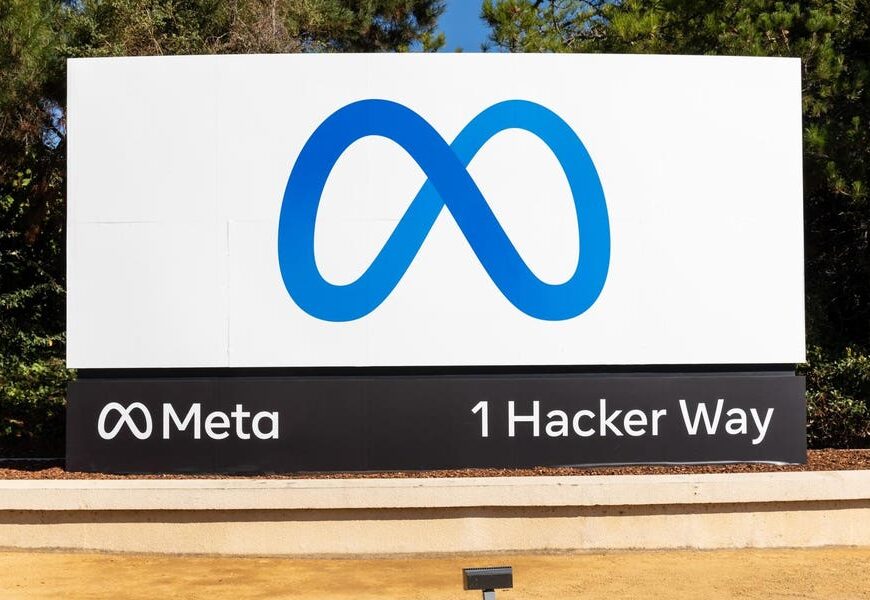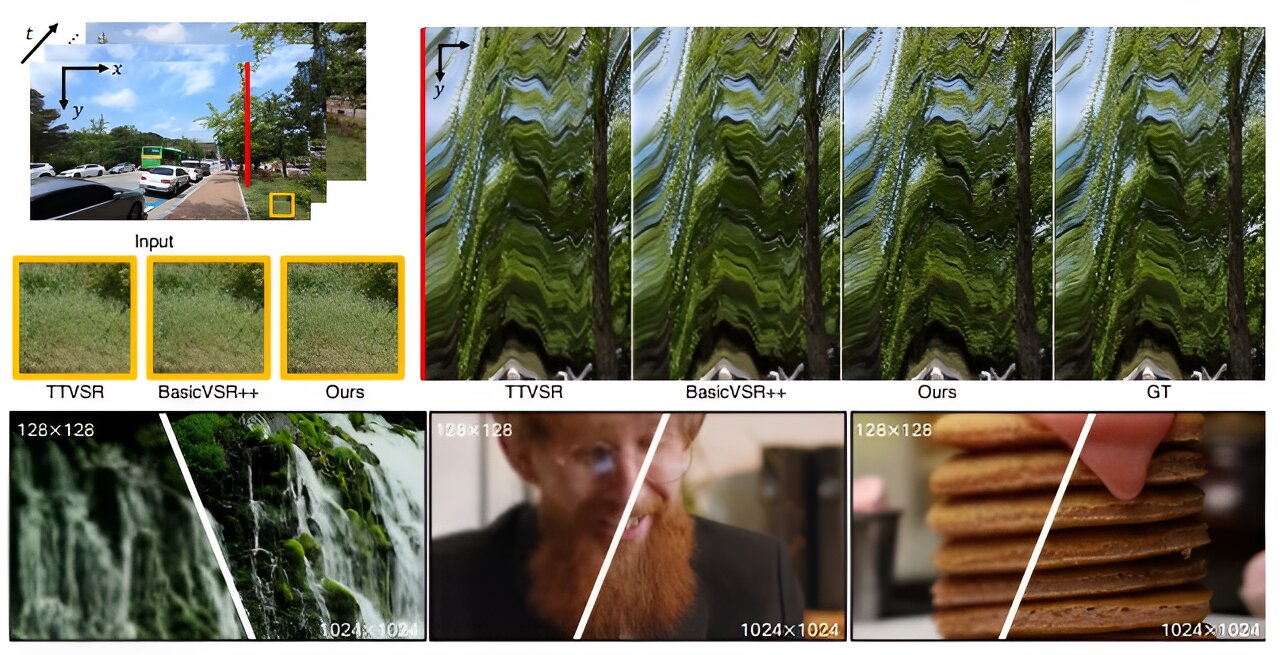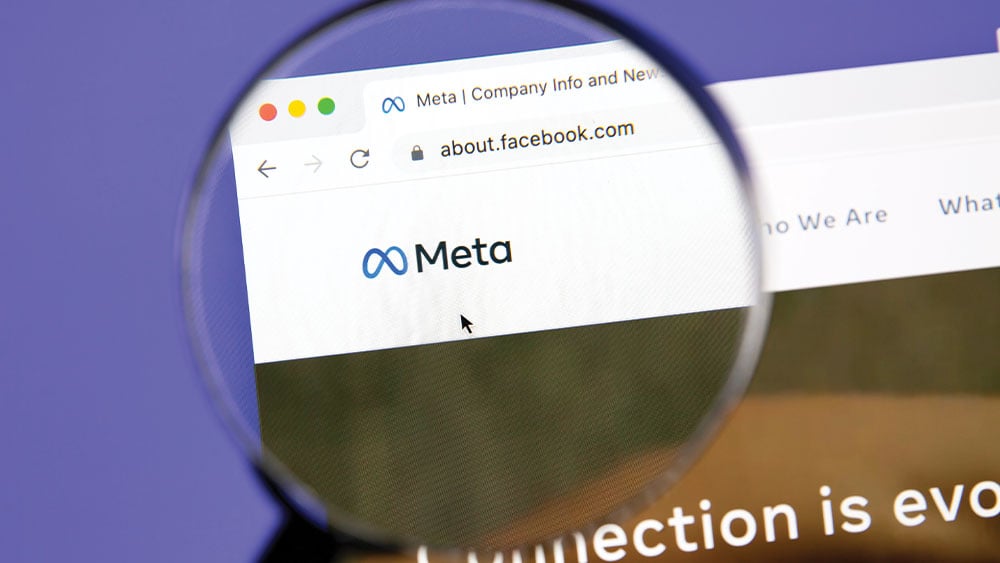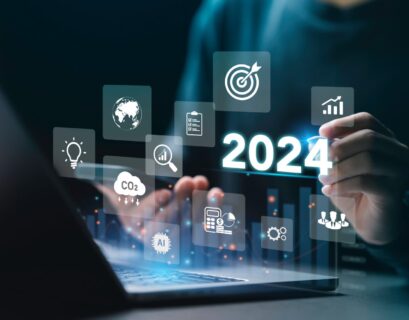Meta has had a huge week, but you wouldn’t think so by looking at their stock chart. The social media and programming company’s stock fell more than 11% after Wednesday’s quarterly earnings that smashed expectations and represented 27% year-over-year sales growth. All this less than a week after the company launched what’s been called a game-changing AI chatbot with an advanced open LLM.
Meta’s chatbot has been roundly feted not just because of what it can do, but because of how accessible it is. The chatbot—which can provide answers, collate information from the internet, create images from text prompts and search Meta’s social media feeds—performs the same types of tasks as ChatGPT and Google’s Gemini. But Meta’s is integrated into its popular social media platforms, putting itself squarely where users already are, instead of making them go to another website. (Meta’s chatbot is also available at its own URL.)
But it offers many more opportunities for developers, writes Forbes senior contributor Janakiram MSV. The Llama 3 LLM is much more advanced than others available, outperforming several other models on different parameters, including writing in English and coding. It will be available to developers to use, and is already integrated into several developer ecosystems, including Hugging Face. It can currently support a context length of 8,000 tokens, meaning it can respond to longer queries in more detail. And Meta is continuing to develop Llama 3 with eyes on expanding its capabilities, languages and versatility. The company expects new launches to be available later this year.
After rolling out the new AI chatbot and LLM, and posting nearly $36.5 billion in quarterly revenue, the drop in Meta’s share price seems shocking. However, the company expects its rapidly growing advertising sales to begin to slow down, expecting Q2 sales below average analyst estimates. It’s also increased its expense outlook for the full year.
CEO Mark Zuckerberg said on the earnings call Meta is working to build and scale its AI now, investing in its development, and is not concentrating on monetizing it just yet. But, he said, Meta has been here before. “Historically, investing to build these new scaled experiences in our apps has been a very good long term investment for us and for investors who have stuck with us,” he said.
Investors and people who work in technology are two very different cohorts with different priorities. But, as Forbes contributor Alex Zhavoronkov writes, in the tech space Llama 3 changes everything. Its LLM is likely to be what developers choose to build on, making Meta dominant in this area, just like it is in the social media space. While Meta’s social media advertising revenue growth could be slowing down, future quarters will show how big its steps are in the AI space, as well as the business opportunities there.
For years, there’s been a lot of talk about open source code, software and LLMs. Historically, open data has not been a thing, but that is changing. Marc Prioleau, executive director of the Open Maps Foundation, talked to me about why open data is important to the future. An excerpt from our conversation is later in this newsletter.
Policy + Regulations
After years of talking about banning TikTok, the federal government actually did it this week. A measure requiring either the sale of Chinese company ByteDance’s short video app to a U.S.-friendly owner, or eventually banning it from app stores, was added to a package of bills providing military aid to Ukraine, Israel and Taiwan. It passed both houses of Congress and was signed into law by President Joe Biden yesterday.
And now the legal battle begins. Forbes’ Alexandra S. Levine and Emily Baker-White report TikTok is not going down without a fight. In an internal memo over the weekend from Michael Beckerman, TikTok’s top policy leader in the Americas, a court battle is promised. “This legislation is a clear violation of the First Amendment rights of the 170 million Americans on TikTok,” he wrote. Many said the sale of TikTok isn’t a realistic goal, either. Forbes reporting has shown many of TikTok’s internal systems are built on ByteDance tools custom-made years ago by Chinese engineers, which will be difficult to take apart. Former National Security Agency general counsel Glenn Gerstell said that what makes a divestiture more “economically unrealistic” is TikTok’s sophisticated algorithm, which is something that China is not going to be willing to sell.
However, Forbes contributor Peter Suciu points out, the TikTok issue may start another much needed conversation among policymakers: protecting data privacy. The reason the law targets TikTok is because China has used the app’s data to spy on Americans. But in the U.S., data from apps can also be used in an invasive way. Approov CEO Ted Miracco told Suciu this legislation is a “blunt instrument” that doesn’t address the root cause of the concerns, and laws that enact robust privacy protections for all apps, regardless of their home country, could do the job more effectively.
Technology + Innovation
An Apple Vision Pro headset.
Apple’s big move into VR headsets may not be paying off. Citing a report from Ming-Chi Kuo, an analyst with TF International Securities, Forbes senior contributor Paul Tassi writes that Apple is cutting the number of Vision Pro VR units it will ship to the U.S. this year roughly in half — from 700,000 to 800,000 to 400,000 to 450,000. Tassi says this isn’t likely a problem with the price of the device, even though it is an expensive purchase of $3,500. It’s more foundational than that: People don’t want VR headsets. It’s a lesson that Meta has seen in recent years, as its VR division Reality Labs has posted consistent losses. In its earnings report yesterday, the Meta division posted a $3.8 billion loss, and the company expects year-over-year losses to “increase meaningfully.”
Artificial Intelligence
The technology underlying AI is exciting, but Stanford University’s Institute for Human-Centered AI’s new annual AI Index is a reminder of what it is: a work in progress. Forbes senior contributor Joe McKendrick writes while AI can currently beat humans on some tasks, there are some complex areas in which people still win, like competition-level mathematics, visual common sense reasoning and planning. And AI developers themselves “score low on transparency,” which in turn hinders efforts to see how robust and safe the AI systems are. It also counts the number of “bad AI” incidents, which increased 32.3% last year.
Bits + Bytes
How A Mapping Project Is Pointing The Way For More Open Data Use
Overture Maps Foundation Executive Director Marc Prioleau.
The Overture Maps Foundation, a project to standardize map data, was founded in December 2022 by Amazon, Meta, Microsoft and TomTom, and is hosted by the Linux Foundation. I talked to Marc Prioleau about the project he’s working on, which relies on open data from a number of sources, and what the future holds for open data. This conversation has been edited for length, clarity and continuity. A longer version of this interview is available here.
Why do you think open data is such a brand new thing?
I think that there are a lot of similarities between open code and open data, but there’s some key differences. I think one of the things where open code and open data are similar is a bunch of people agree that they would be better off, they would have a better quality product if they collaborated on building something. Usually what happens in open code or open data is there’s an “open” part, but then people still have the ability to create business models on top of that. I think open code took a while to figure that out, but that’s pretty established now. Open data is going through the same thing. What are the areas where we can collaborate on data and it could be open, and still leave room for business models on top of that?
There’s some differences. Let’s say you’re a software engineer. When you write code in an open source project, that code is open as you contribute it. Data is a little different, because data represents facts. It has to come from somewhere. It didn’t just spring from your brain. It was a measurement of something. In mapping, that can be a measurement of: Is the road still there? Is that business still there? Did things change? What’s upstream of open data that’s different than open code is there’s data collection and synthesis and analysis, and that usually is not necessarily open. I think that’s a fairly different business proposition than open code.
What do you think it would take to get more businesses and other entities interested in open data?
The thing I find is that conceptually, everyone understands the strategy around open data. They get it, they nod their heads, they do everything. The challenge becomes bringing a group together who actually will collaborate. One of the problems in any open source project is how do you share participation? Do you have people who are the so-called free riders, the people who are using the output of an open source project, but aren’t contributing into it? Ultimately, if no one puts into it, the project goes away. I think the key part is really developing a mechanism where people can contribute and have incentives to contribute.
Strategically, at least for our project, I can describe it to people and they understand the strategy, the rationale, the reason you’d want to do it. The reason it makes sense. I don’t find that being a hard part at all. But, you know, then people have to do it. They have to go the distance. We started with four members. Now we’re at 27. Part of it is the benefit that they get if this happens, and the alternative if it doesn’t happen. The alternatives aren’t good.
In five years, do you think open data will be seen more like open code and open software today?
I think it’s going to be a related but distinct field. Today, people think open source is open source. Code data doesn’t matter. I think what you’ll see five years from now is open data will become a distinct entity. It’s for these things we talked about. Data has to come from somewhere, and so you need people contributing things that are often proprietary and have value. Data has to be accurate. Data needs to be output on a certain frequency to be accurate and up to speed. The other one is data has bulk, right? We’re dealing with terabytes of data and petabytes of data. Now you’ve got cloud computing costs.
I think companies will start to develop specialties around that. I think open data foundations like ours, are really going to have to address those unique things in unique ways.
Facts + Comments
The legal dispute between Apple and Epic Games is heading back to the courtroom next month after a judge ruled Apple’s commission on external purchases appears to flout a ruling that it must create alternative ways for users to make purchases.
27%: Commission Apple charges for purchases from large developers outside of its App Store
3% to 6%: Amount Epic CEO says it costs for a third-party payment processor for non-App Store payments, which makes them costly for developers
‘Undermine the spirit of the injunction’: District Judge Yvonne Gonzalez Rogers wrote Apple’s action appears to limit competition, impede the free flow of information and constrain user choice
Strategies + Advice
Managers may not always be beloved by members of their teams, and it’s important to look in the mirror to make sure you’re not the problem. Here are ways to self-identify bad management and tips to improve.
There’s a lot that leaders do that goes unseen and unnoticed. Here’s how to work through some of those tasks.
Quiz
Axon, best known for making Tasers, has a new AI-powered tool for police departments. What does it do?
A. Automatically track suspicious vehicles with traffic camera data
B. Write police reports from body camera audio
C. Cross reference records to locate repeat offenders
D. Flag when equipment is ready for maintenance
See if you got the answer right here.










